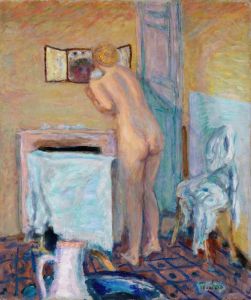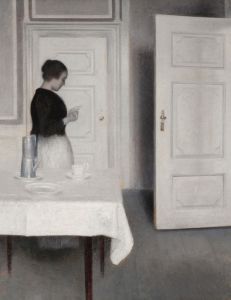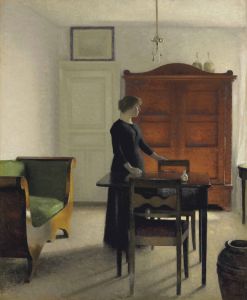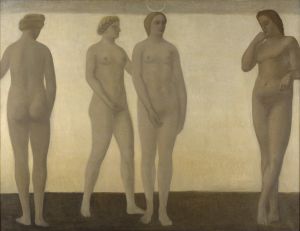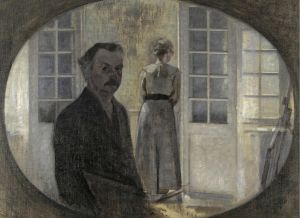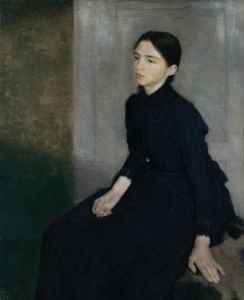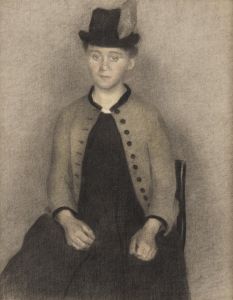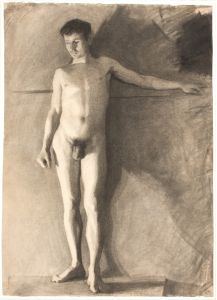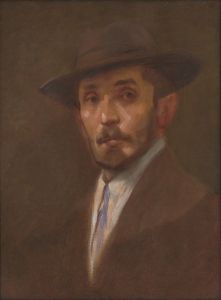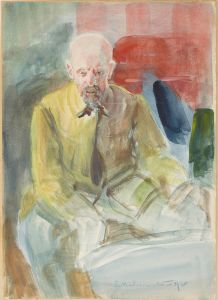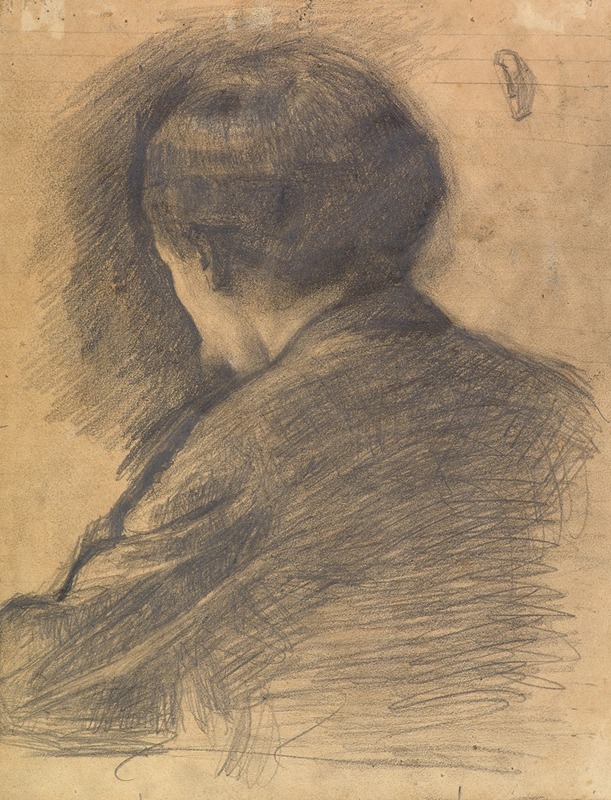
Self-Portrait seen from behind
A hand-painted replica of Vilhelm Hammershøi’s masterpiece Self-Portrait seen from behind, meticulously crafted by professional artists to capture the true essence of the original. Each piece is created with museum-quality canvas and rare mineral pigments, carefully painted by experienced artists with delicate brushstrokes and rich, layered colors to perfectly recreate the texture of the original artwork. Unlike machine-printed reproductions, this hand-painted version brings the painting to life, infused with the artist’s emotions and skill in every stroke. Whether for personal collection or home decoration, it instantly elevates the artistic atmosphere of any space.
Vilhelm Hammershøi, a Danish painter known for his poetic and subdued interior scenes, created the artwork "Self-Portrait seen from behind" in 1914. This painting is a notable example of Hammershøi's unique approach to portraiture and his broader artistic style, which often emphasized mood and atmosphere over detailed representation.
"Self-Portrait seen from behind" is distinguished by its unconventional composition. As the title suggests, the painting depicts the artist himself from behind, a perspective that is relatively rare in self-portraiture. This choice reflects Hammershøi's interest in exploring the boundaries of traditional portraiture and his desire to capture the essence of a subject without relying on facial expressions or direct engagement with the viewer. The painting is executed with Hammershøi's characteristic muted palette, dominated by shades of gray, white, and black, which contributes to the introspective and contemplative mood of the work.
The setting of the painting is an interior space, a common theme in Hammershøi's oeuvre. The artist is depicted standing in a sparsely furnished room, which is rendered with a meticulous attention to detail. The simplicity of the room, with its bare walls and minimal furnishings, serves to focus the viewer's attention on the figure of Hammershøi himself. The subtle play of light and shadow in the painting enhances the sense of quietude and introspection, inviting the viewer to contemplate the inner life of the artist.
Hammershøi's decision to present himself from behind can be interpreted as a reflection of his introspective nature and his interest in the themes of solitude and anonymity. By not showing his face, Hammershøi creates a sense of mystery and allows the viewer to project their own interpretations onto the figure. This approach is consistent with the artist's broader body of work, which often features figures that are turned away from the viewer or are otherwise obscured.
The painting is also notable for its technical execution. Hammershøi's brushwork is precise and controlled, contributing to the overall sense of calm and stillness in the composition. The artist's use of a limited color palette and his attention to the subtleties of light and shadow demonstrate his mastery of tonal painting, a technique that he employed to great effect throughout his career.
"Self-Portrait seen from behind" is housed in a private collection, and as such, it is not as widely accessible as some of Hammershøi's other works. However, it remains an important piece within his oeuvre, offering insight into the artist's self-perception and his innovative approach to portraiture. The painting exemplifies Hammershøi's ability to convey complex emotional states through simple, yet evocative compositions, and it continues to be appreciated for its quiet beauty and introspective depth.
In summary, Vilhelm Hammershøi's "Self-Portrait seen from behind" is a compelling example of the artist's distinctive style and thematic concerns. Through its unconventional composition and subdued palette, the painting invites viewers to engage with the artist's introspective vision and to reflect on the nature of self-representation in art.





